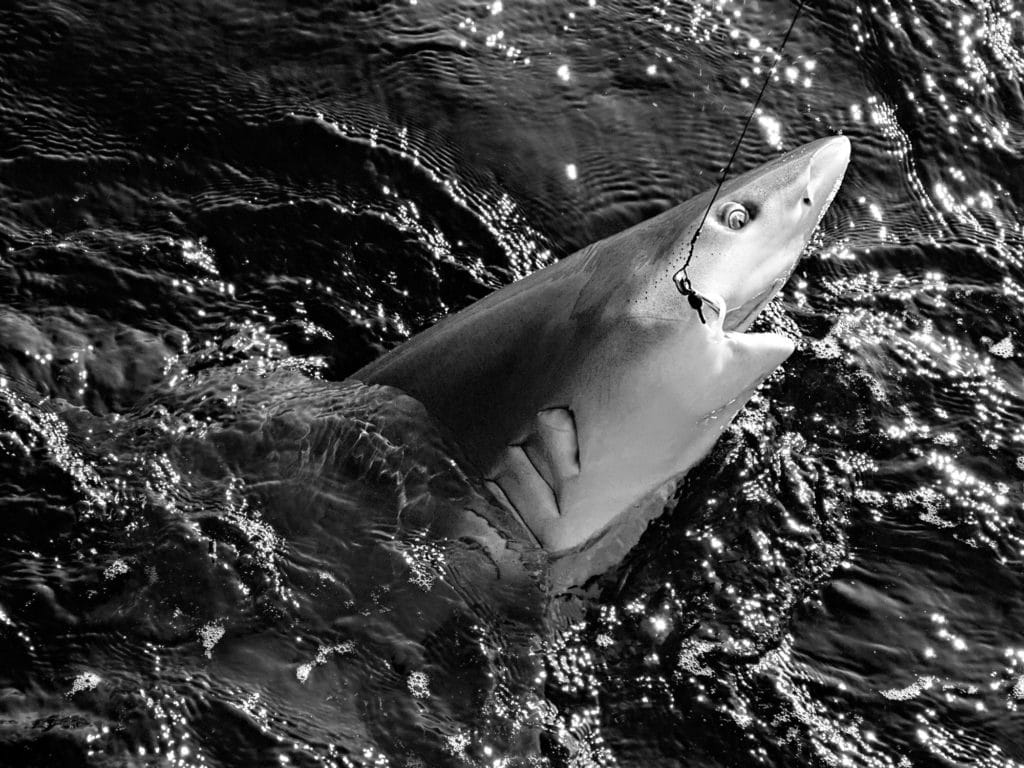
SHARKS OF NEW BIGHT
THE THOROUGHFARE
New York Bight hosts a variety of pelagics that use the massive channel to come and go across the continental shelf with the seasons. An abundance of sharks and the forage they pursue travel that ancient submarine highway scoured by the Hudson River at the end of the last ice age, turning the area into a world-class shark-fishing destination.
“Makos and threshers show up the first week of June,” says Glen Kapoosuzian, perennial shark tournament winner and skipper of Reel Games, a charter boat out of Freeport, New York. “Early fishing centers around Chicken Canyon, Glory Hole, Mudhole and nearby wrecks. It all begins when the water hits 57 degrees, and things get better as the temperature rises. I’ve caught many of my biggest sharks in early June, including a 591-pound thresher and a 594-pound mako.”
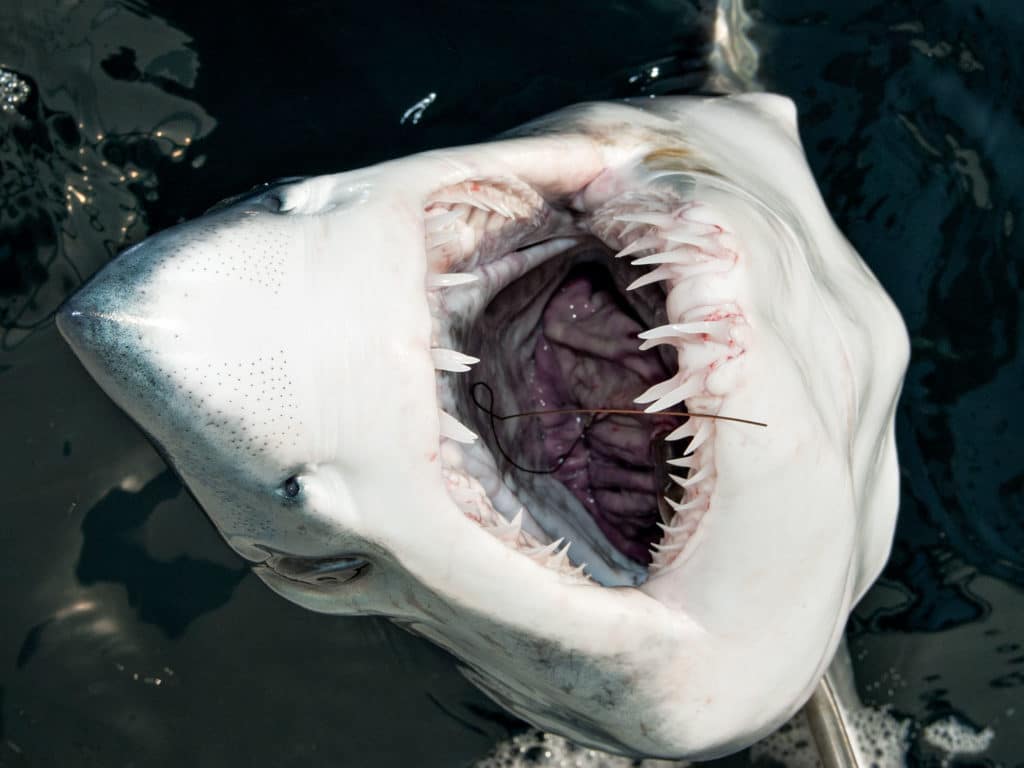
DANGEROUS QUARRY
Both track down prey from long distances by picking up scent dispersed by the water, so chumming is equally productive for either species. But their hunting tactics couldn’t be more different. While makos rely on their speed and daggerlike chompers to kill or severely injure during the initial attack, threshers use their long tail fins to incapacitate prey with powerful blows before circling back to devour the stunned victims.
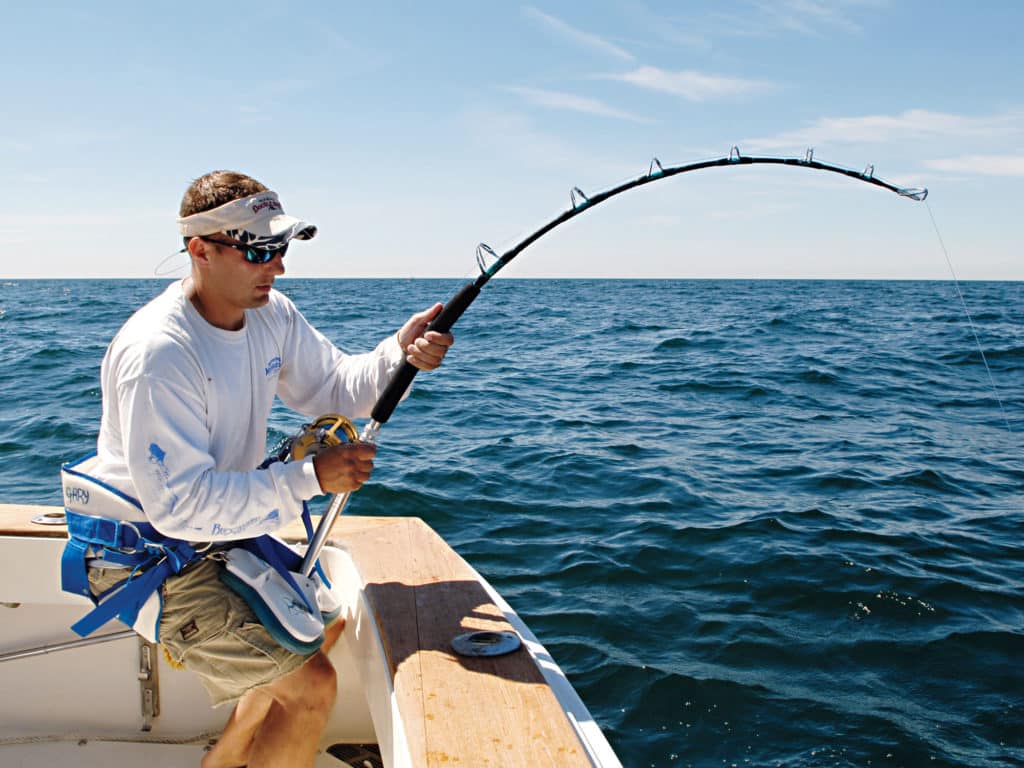
ESSENTIAL FACTORS
While big sharks lead the cavalcade, smaller ones pour into the Bight as the season progresses. And in midsummer, a lot of the threshers move well inshore to attack schools of menhaden, often within sight of the beach. That’s when Capt. Brian Rice of Jersey Devil out of Fairhaven, New Jersey, starts fishing for them. “You don’t have to run very far to find threshers in July,” Rice says. “We usually fish within sight of New York City, west of the ship approach to the harbor. They’re there for the menhaden, but I believe they also come for reproductive reasons. That’s why I prefer to only take a male when we decide to keep one.” Males are easily identified by their external sex organs — called “claspers” — located on the back of their pelvic fins.
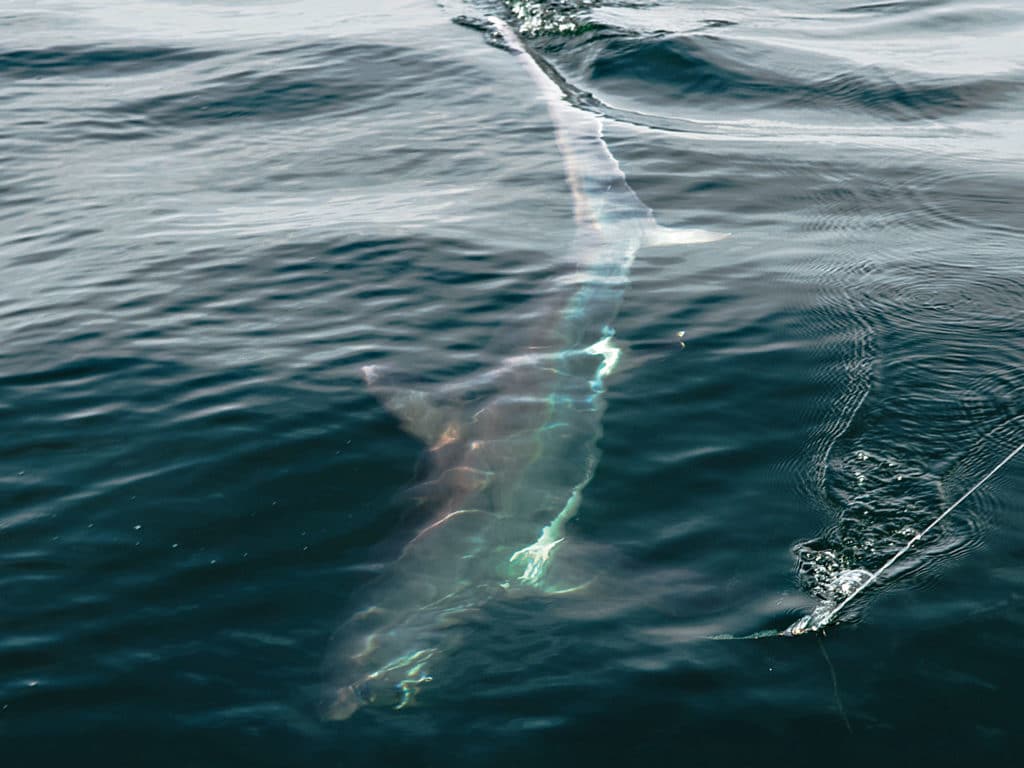
PROPER SETUP
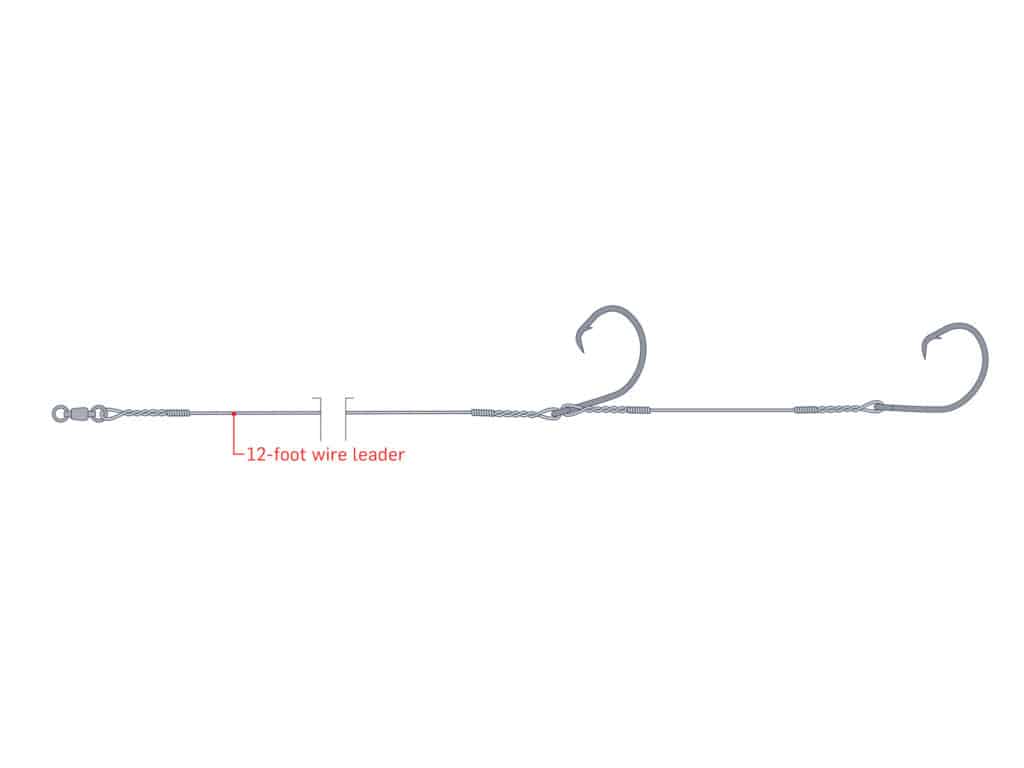
TOP SHARK RIG # 1
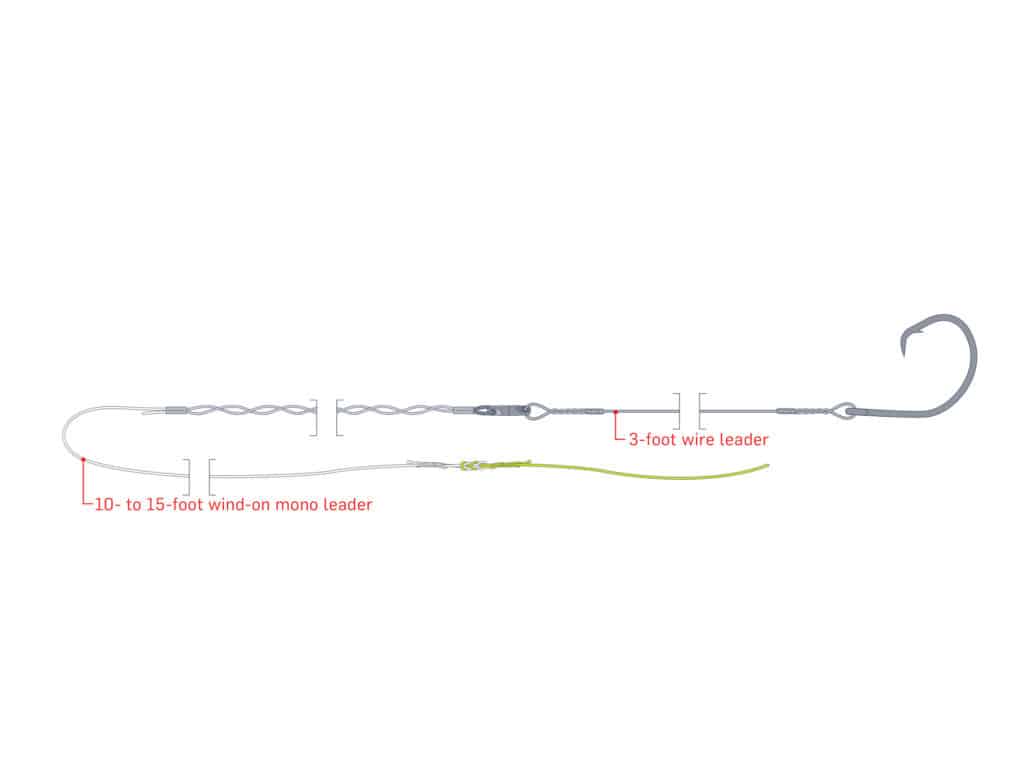
TOP SHARK RIG # 2
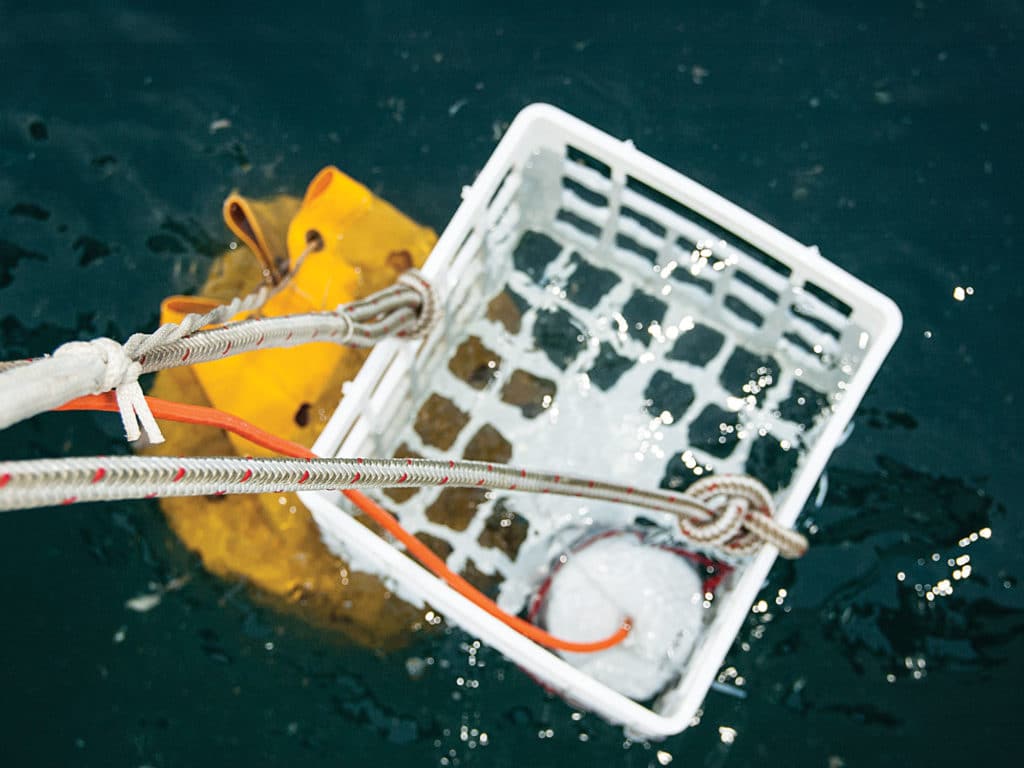
CHUM FOR SUCCESS
Both captains prefer a four-line spread with the farthest line set the deepest. Every line is rigged the same way, but each is fished a little closer and shallower than the previous one, with the closest line unweighted and set near the boat just out of sight in the water column. Early and late in the season, cold water keeps sharks closer to the surface, so set your long bait a little closer to the boat and no deeper than 75 feet. In the summer, however, the long bait can be set 200 to 300 feet back and as deep as 150 feet. Each weighted bait should be counted down to the desired depth, then floated back into the slick under a balloon or a Styrofoam float with a release system. We also spread the baits horizontally by running the longest line off a release clip on the bow rail and the next one off one of the outrigger clips.
BATTLE STATIONS
When you hook a shark, expect the surprised brute to embark on a blazing run or leap frenetically out of the water. The job of the angler is to quickly take up slack, then settle into the fighting belt and harness and let the drag do its work. Meanwhile, the rest of the crew should clear other lines and any cockpit clutter. Safety is a prime concern when dealing with sharks, especially makos and threshers. Makos are renowned for their aerial maneuvers, but threshers jump too, though not as -frequently, and those long tails of theirs can inflict -serious injury to unsuspecting crew members. I saw someone almost get knocked out by a powerful tail slap
THE END GAME
If you intend to keep a shark, have the flying gaff or harpoon at the ready with the tether securely fastened to a cleat and coiled out of the way, preferably in a 5-gallon bucket. With the boat at idle, the angler brings the fish close enough for a gloved wireman to grab the leader and then back away from the gunwale. The wireman pulls the fish within range of the gaff or harpoon, but he must remain alert in case the fish lunges away. The designated gaffer should strike firmly and without hesitation, aiming for the gills. Once the shark is subdued, it must be brought alongside to get the tail rope in place. At that point the gaff tether is secured to the spring-line cleat and the tail rope to the stern cleat until the shark expires and it’s safe to bring it in the boat. To release a shark, you skip the gaffing and clip the leader with wire cutters as close to the mouth as you dare.
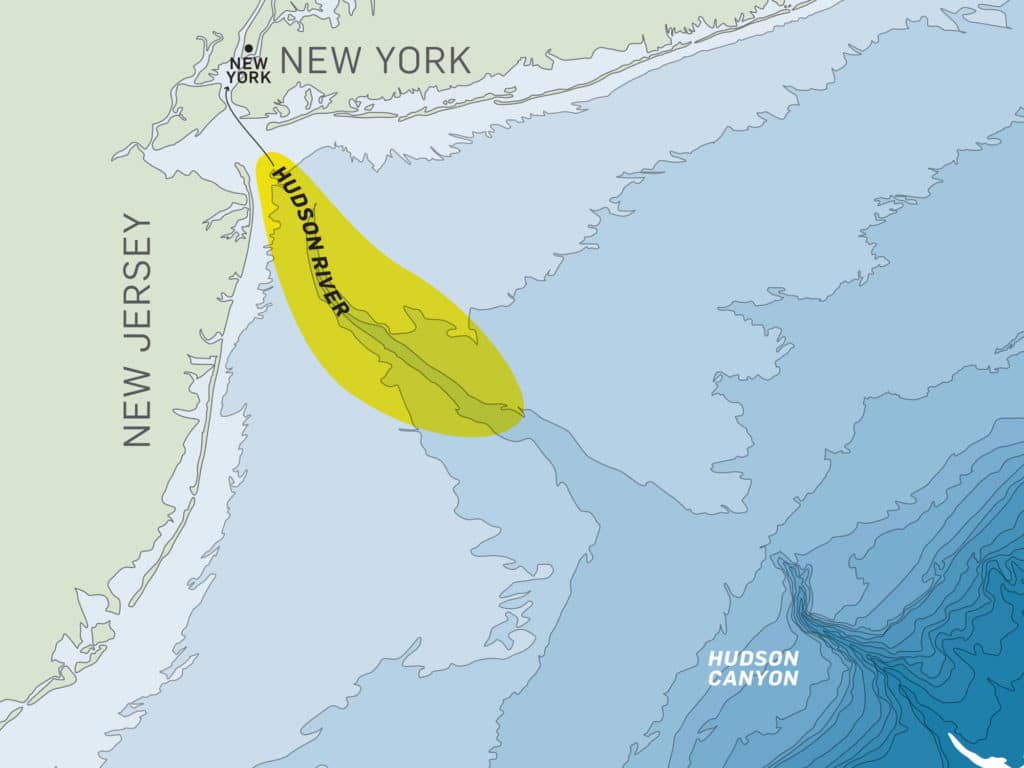
NORTHEAST SHARK HEAVEN
FAST FACTS FOR SUCCESS
WATER TEMP: When the water reaches 57 degrees, sharks start showing up in New York Bight.
SHARK BAIT: Small bluefish is the preferred shark bait in the Bight: the fresher, the better.
TEAM EFFORT: Always have a designated wireman and a gaffer for safer and easier sharking
SWS PLANNER New York Bight Sharks
What: Mako and thresher sharks Where: New York Bight, from the beach to 50 miles offshore When: June through November Who: As the fishery evolves with the season, sharks move close to shore, where they’re accessible to anglers in smaller boats with the proper gear. Farther offshore, larger, more seaworthy craft become necessary. These for-hire boats book shark charters in New Jersey and on Long Island.
Capt. Glen Kapoosuzian Freeport, New York 516-641-4877
Capt. Brian Rice Fair Haven, New Jersey 732-996-6372
Capt. John Williams Point Pleasant Beach, New Jersey 732-539-7991
SWS TACKLE BOX New York Bight Sharks
Rods: 50- to 80-pound-class stand-up
Reels: Matching lever-drag
Line: 50- to 80-pound monofilament
Leader: 12 feet of 240-pound stainless-steel wire with a 300-pound swivel between it and the main line, or a 10- to 15-foot, 250-pound mono wind-on leader with a 250-pound swivel connecting it to 3 feet of 240-pound stainless wire
Hooks: 16/0 to 20/0 circle
Bait: Fresh small bluefish or large menhaden









